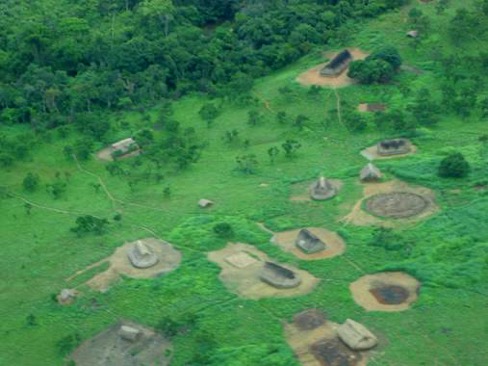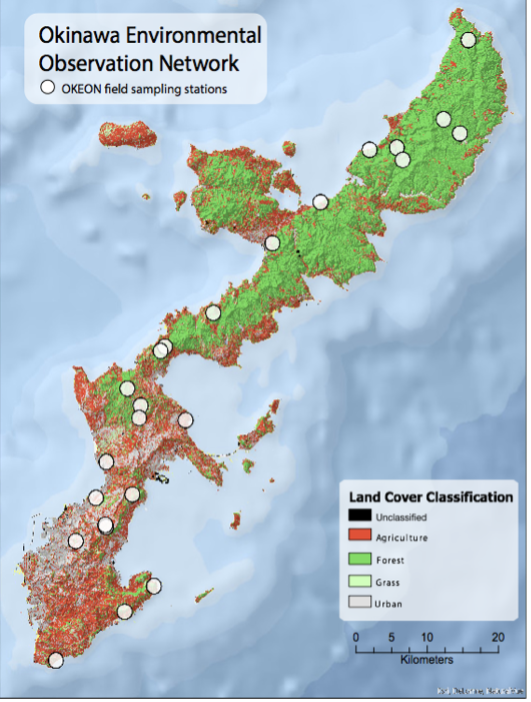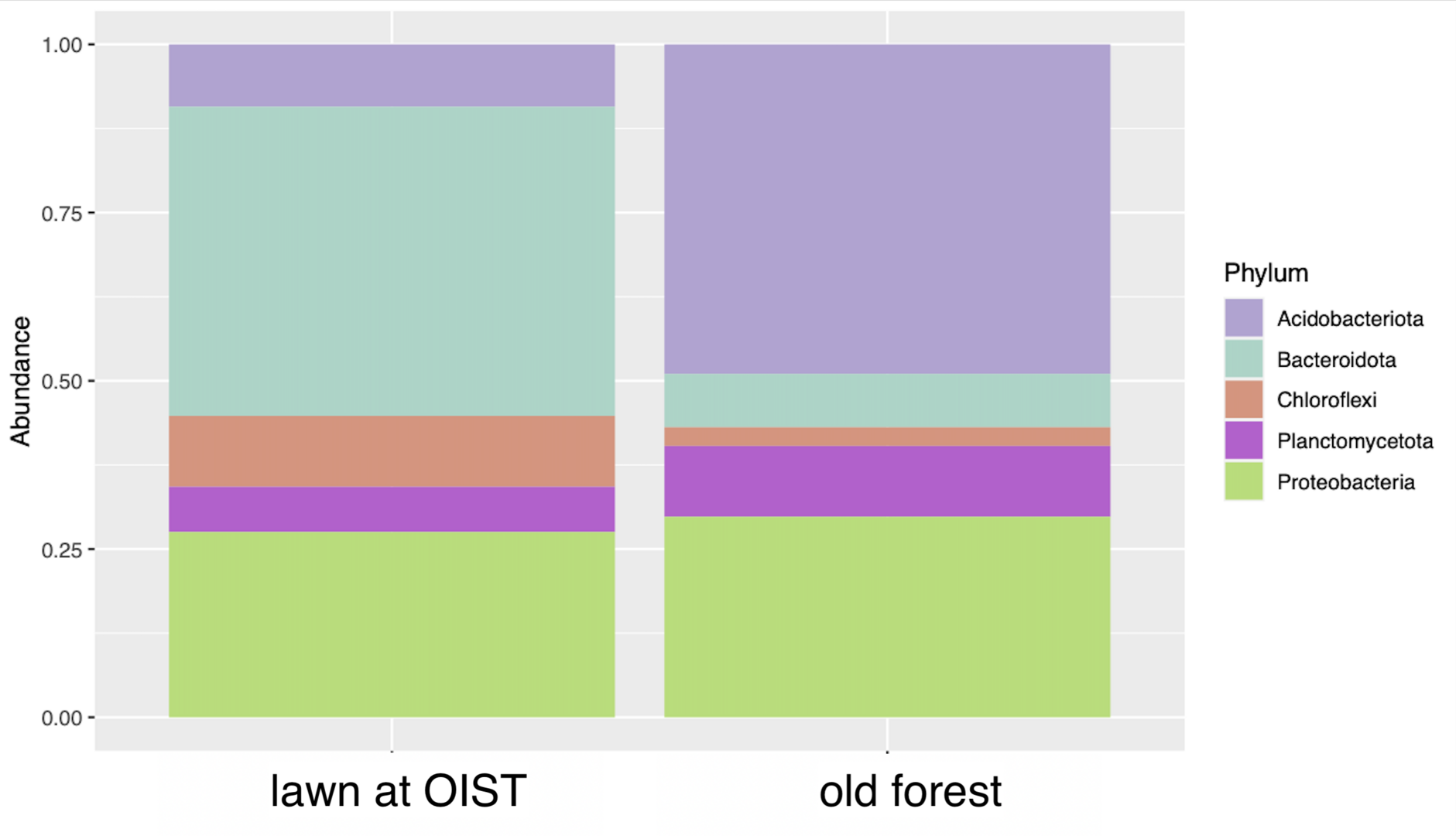Juanita Choo
Visiting Research Scientist
BACKGROUND
I am an ecologist and ethnobiologist with broad interest in the impacts of modern and traditional human activities on plant-animal interactions, forest biodiversity, and ecosystem services. I am also fascinated by the interplay between biodiversity loss and cultural erosion. I study the ecological ramifications of culture change and work to preserve and revitalize traditional ecological knowledge (TEK). I enjoy not only the academic aspects of research but also applying research findings and TEK to develop restoration strategies and nature-inspired design and materials that supports resilient, regenerative urban ecosystems
RESEARCH
1. Amazon Forest
The implication of subsistence activities for plant dispersal and forest biodiversity
 My prior research has shaped my motivation to understand the nexus between biological and cultural diversity. I lived with the Hotï to investigate the ecological and cultural implications when indigenous communities shift from semi-nomadic to sedentary lifestyles. I documented their traditional ecological knowledge (TEK) on weevil cultivation, uncovering valuable insights into palm and weevil ecology. This included their practice of using plant volatiles to attract adult weevils to specific sites for egg-laying, allowing for the targeted harvest of larvae as a food source. I also quantified how shifts in the intensity of subsistence activities can ultimately influence dung-beetle biodiversity.
My prior research has shaped my motivation to understand the nexus between biological and cultural diversity. I lived with the Hotï to investigate the ecological and cultural implications when indigenous communities shift from semi-nomadic to sedentary lifestyles. I documented their traditional ecological knowledge (TEK) on weevil cultivation, uncovering valuable insights into palm and weevil ecology. This included their practice of using plant volatiles to attract adult weevils to specific sites for egg-laying, allowing for the targeted harvest of larvae as a food source. I also quantified how shifts in the intensity of subsistence activities can ultimately influence dung-beetle biodiversity.
My current work in the Amazon focuses on understanding how hunting and resource extraction influence forest regeneration and tropical biodiversity. Working with collaborators at OIST and the San Diego Zoo Alliance, I integrate field experiments, genetic studies, spatial analyses, to understand how human activities alter plant-animal interactions, and plant regeneration through their impacts on plant dispersal, gene flow, and competitive interactions. To effectively monitor how mammal movements influence plant dispersal and spatial genetics across multiple sites and scales, we developed NGS sequencing workflow and bioinformatic pipelines to identify snps for several non-model Amazonian plant species.
2. Okinawa
Forest tree functional and taxonomic biodiversity across disturbance gradient and recovery and resilience to typhoon events
I oversee plant biodiversity research at OIST with the support of collaborators including our amazing OIST OKEON field team. Okinawa is a biodiversity hotspot of Japan housing many endemic and endangered species. Okinawan forests makeup only 0.1% of forests in Japan, yet they are home to nearly a third of the 1250 plant species documented in the country.
 We established and censused 14 tree plots across the island between 2019-2021, identifying, mapping, and collecting censuse data from nearly 3f000 trees. Our data on tree diversity, stand biomass serves to address questions on how forest tree functional and taxonomic diversity and stand biomass changes across a human disturbance gradient. With increasing typhoon frequency and intensity, we are also using canopy cover data to assess typhoon damage and recovery, and to understand how tree diversity, stand density influence forest resilience and typhoon recovery. Our tree data further provides baseline information for ongoing projects with arthropods, birds, and mammals. We have also collected plant samples to eventually generate a DNA barcode reference library for future research.
We established and censused 14 tree plots across the island between 2019-2021, identifying, mapping, and collecting censuse data from nearly 3f000 trees. Our data on tree diversity, stand biomass serves to address questions on how forest tree functional and taxonomic diversity and stand biomass changes across a human disturbance gradient. With increasing typhoon frequency and intensity, we are also using canopy cover data to assess typhoon damage and recovery, and to understand how tree diversity, stand density influence forest resilience and typhoon recovery. Our tree data further provides baseline information for ongoing projects with arthropods, birds, and mammals. We have also collected plant samples to eventually generate a DNA barcode reference library for future research.
Soil DNA metabarcoding
 Soil microbial diversity are important components of the bottom-up effects in forest ecosystems. Microbial diversity is shaped by ongoing feedbacks between above and below ground processes, and these are further affected by human disturbance and climate. We have initiated preliminary work to refine the field and laboratory protocols to eventually assess differences in soil microbial diversity across our tree plots to understand the role of plant biodiversity, human disturbance, and typhoon events on microbial. We are also interested in the role of soil microbial diversity in reforestation efforts.
Soil microbial diversity are important components of the bottom-up effects in forest ecosystems. Microbial diversity is shaped by ongoing feedbacks between above and below ground processes, and these are further affected by human disturbance and climate. We have initiated preliminary work to refine the field and laboratory protocols to eventually assess differences in soil microbial diversity across our tree plots to understand the role of plant biodiversity, human disturbance, and typhoon events on microbial. We are also interested in the role of soil microbial diversity in reforestation efforts.
Reforestation and traditional knowledge
 Forests have long served as sanctuaries to humans, with people managing their resources for their survival. Since the industrial era however, the balance of human-forest interaction has been disrupted, leading to widespread deforestation, and exacerbating our present climate challenges. University campuses globally span vast areas and some like OIST, are built within biodiverse habitats. As institutions of research and education, we are poised to promote biodiversity and cultural conservation by example. Using our tree biodiversity data and research on traditional knowledge, we initiated a volunteer-led campus reforestation project. We reforested former lawn areas on campus to enhance local biodiversity and to raise awareness of the local and traditional uses of forest trees. The hope is to continue such reforestation initiatives in the broader community to promote biodiversity conservation and revitalize interest in the traditional uses of trees as forest corridors and natural barriers against typhoons.
Forests have long served as sanctuaries to humans, with people managing their resources for their survival. Since the industrial era however, the balance of human-forest interaction has been disrupted, leading to widespread deforestation, and exacerbating our present climate challenges. University campuses globally span vast areas and some like OIST, are built within biodiverse habitats. As institutions of research and education, we are poised to promote biodiversity and cultural conservation by example. Using our tree biodiversity data and research on traditional knowledge, we initiated a volunteer-led campus reforestation project. We reforested former lawn areas on campus to enhance local biodiversity and to raise awareness of the local and traditional uses of forest trees. The hope is to continue such reforestation initiatives in the broader community to promote biodiversity conservation and revitalize interest in the traditional uses of trees as forest corridors and natural barriers against typhoons.
CURRENT RESEARCH COLLABORATORS
OIST: Evan Economo, Sam Ross, Kenneth Dudley
Masayuki Hayashi
San Deigo Zoo Wildlife Alliance: Varun Swamy, Mrinalini Erkenswick Watsa
Field Project International: Gideon Erkenswick
Trier University: Susan Kennedy
PUBLICATIONS
Lamperty T, Diaz-Martin Z, Swamy V, Karubian J, Choo J, Dunham AE Defaunation is associated with increased fine-scale spatial genetic structure in a small-seeded palm despite high abundances of small-bodied seed dispersers. In Review. Molecular Ecology https://tinyurl.com/32zbkrvv
Kennedy S, Calaor J, Zurápiti Y, Hans J, Yoshimura M, Choo J, Andersen JC, Callaghan J, Roderick GK, Krehenwinkel H, Haldre Rogers, Gillespie RG, Economo EP (2022) Richness and resilience in the Pacific: DNA metabarcoding enables parallelized evaluation of biogeographic patterns. Molecular Ecology https://doi.org/10.1111/mec.16575
Choo J, Gill B, Zuur A, Zent EL, Economo EP (2019) Impacts of an indigenous settlement on the taxonomic and functional structure of dung beetle communities in the Venezuelan Amazon. Biodiversity and Conservation 29:207-22 http://doi.org/10.1007/s10531-019-01879-5
Choo J, Carrasco C, Alvarez-Loayza P, Simpson BB, Economo EP (2017) Life history traits influence the strength of distance- and density-dependence at different life stages of two Amazonian palms. Annals of Botany 120:147-158 https://doi.org/10.1093/aob/mcx051
Sheehan MJ, Choo J, Tibbetts EA (2017) Heritable variation in colour patterns mediating individual recognition. Royal Society Open Science https://doi.org/10.1098/rsos.161008
Choo J, Juenger TE, Simpson BB (2012) Consequences of frugivore-mediated seed dispersal for the spatial and genetic structures of a neotropical palm. Molecular Ecology 21:1019-1031 https://doi.org/10.1111/j.1365-294x.2011.05425.x
Choo J, Ishak H, Simpson B, Mueller U, Juenger T (2010) Characterization of 14 microsatellite loci in a tropical palm, Attalea phalerata (Arecaceae). American Journal of Botany 97:105-106 https://doi.org/10.3732/ajb.1000281
Choo J, Zent EL, Simpson BB (2009) The importance of traditional ecological knowledge for palm-weevil cultivation in the Venezuelan Amazon. Journal of Ethnobiology 29:113-128 https://doi.org/10.2993/0278-0771-29.1.113
Choo, J (2008) Potential ecological implications of human entomophagy by subsistence groups of the Neotropics. Terrestrial Arthropod Reviews 1: 81-93 https://doi.org/10.1163/187498308x345442
Choo J, Pang E, and Prociv P (2000) Hookworms in dogs of Kuching, Sarawak (North Borneo). Transactions of the Royal Society for Medicine and Health 94: 21-22 https://doi.org/10.1016/s0035-9203(00)90425-5




